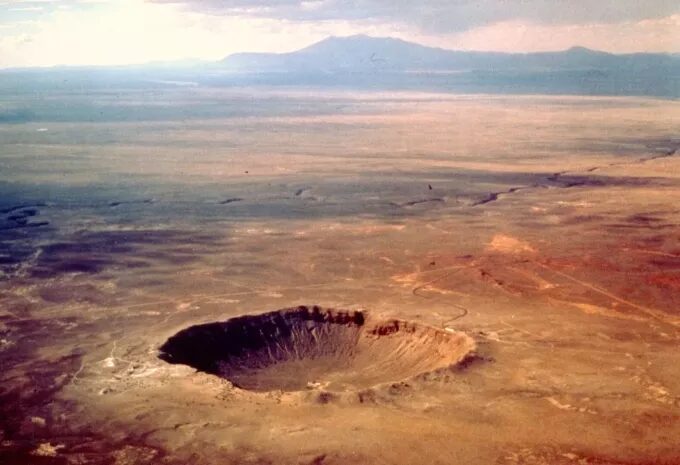Researchers at the University of Jena and the German Electron Synchrotron DESY solve a 60-year-old mystery with a high-pressure study.

© US Geological SurveyBarringer crater in Arizona was formed about 50 000 years ago by an approximately 50-meter iron meteorite.
The team of Falko Langenhorst from the University of Jena and Hanns-Peter Liermann from DESY simulated an asteroid impact with the mineral quartz in the lab and pursued it in slow motion in a diamond anvil cell, while monitoring it with DESY's X-ray source PETRA III. The observation reveals an intermediate state in quartz that solves a decades-old mystery about the formation of characteristic lamellae in material hit by an asteroid. Quartz is ubiquitous on the Earth's surface, and is, for example, the major constituent of sand. The analysis helps to better understand traces of past impacts, and may also have significance for entirely different materials. The researchers present their findings in the journal
Nature Communications.Asteroid impacts are catastrophic events that create huge craters and sometimes melt parts of Earth's berock. "
Nevertheless, craters are often difficult to detect on Earth, because erosion, weathering and plate tectonics cause them to disappear over millions of years," Langenhorst explains. Therefore, minerals that undergo characteristic changes due to the force of the impact often serve as evidence of an impact. For example, quartz sand (which chemically is silicon dioxide, SiO
2) is gradually transformed into glass by such an impact, with the quartz grains then being crisscrossed by microscopic lamellae. This structure can only be explored in detail under an electron microscope. It can be seen in material from the relatively recent and prominent Barringer crater in Arizona, USA, for example.
"For more than 60 years, these lamellar structures have served as an indicator of an asteroid impact, but no one knew until now how this structure was formed in the first place," Liermann says. "We have now solved this decades-old mystery."
To do so, the researchers had spent years modifying and advancing techniques that allow materials to be studied under high pressure in the lab. In these experiments, samples are usually compressed between two small diamond anvils in a so-called diamond anvil cell (DAC). It allows extreme pressures - as prevalent in Earth's interior or in an asteroid impact - to be generated in a controlled manner.
